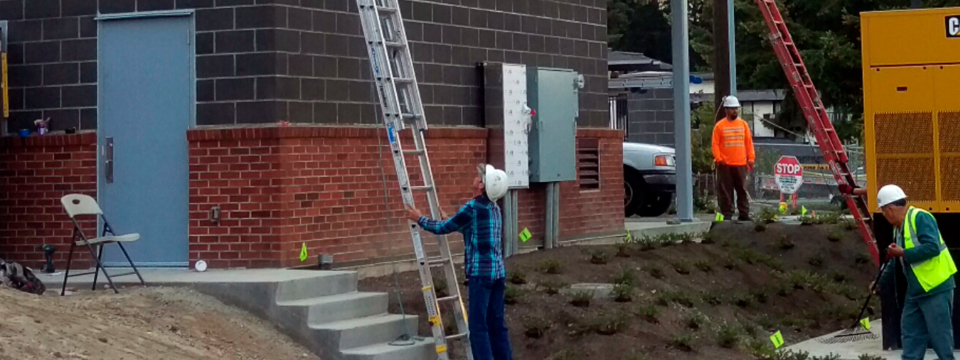Project Highlights
Location: Lynnwood, Washington
Industry: Industrial
Services Used: Energy Efficiency Contracting,
Climate: Humid & Cold
Topic: Efficiency, Energy Services, Financial Solutions,

Lynnwood, Washington
Challenge
Having successfully completed a variety of energy conservation measures (ECMs) designed to improve plant processes and efficiency, including the installation of a new screw press, the City of Lynnwood outlined key objectives for Phase II upgrades of its Wastewater Treatment Plant (WWTP). The City sought to maximize operational efficiencies and reduce maintenance costs, while adding flow capacity to its sewer system to avoid overloading and backups of its lift stations. The desired upgrades would replace the interim pump station used to intercept excess drainage and alleviate overload conditions.
Solution
Trane completed an Investment Grade Audit of the City’s new Lift Station and Force Main 16 through the State of Washington Energy Savings Performance Contracting (ESPC) program administered by the Department of Enterprise Services. Based on the audit, Trane presented a project solution designed to maximize utility incentive dollars, increase sewer system capacity, improve system operation, address capital improvement needs, and maximize energy efficiency. The upgrade included process and efficiency improvements for the City of Lynnwood’s sewer conveyance system through the construction of a new lift station and associated force main.
The scope of the project involved engineering design, construction management, equipment installation, and measurement and verification (M&V). Utilizing this design build delivery system helped to shorten project duration.
“Trane was a pre-approved ESCO by the State of Washington,” said Les Rubstello, operations and maintenance manager, City of Lynnwood. “That made the procurement process and the project implementation a lot faster and a lot easier for us.”
Implementing new construction
Trane and the City of Lynnwood moved forward with the upgrades, planning improvements for several lift stations simultaneously to reduce the force main size and pumping horsepower. Designed to improve the sewage conveyance infrastructure, reduce historical surcharge and flooding conditions during wet weather, and meet future growth and sewer demands of the City, Lift Station 16 is rated for a peak flow of 2,500 gallons per minute. The station includes a pump station building for onsite storage and maintenance; a below-grade wet well with two submersible pumps and a valve chamber to reduce clogging and ongoing maintenance requirements; an above-grade building to house electrical and PLC controls; and an outdoor emergency generator. The new lift station will improve flow monitoring and alarming, and includes odor control and aesthetic improvements.
The force main connects the new Lift Station 16 to the discharge manhole located in the community college parking lot. It includes approximately 6,650 linear feet of 18-inch outside diameter high-density polyethylene piping, and approximately 310 linear feet of 12-inch gravity sewer main.
Results
To reduce existing surcharges and flooding, and to meet future growth and sewer demands, the City of Lynnwood and Trane entered into a State of Washington Energy Savings Performance Contracting (ESPC) program administered by the Department of Enterprise Services for the construction of a new lift station and force main. The project has increased the City’s sewer system capacity, helping to reduce surcharges and flooding. The upgrades are expected to save 31,690 kWh annually, for a savings of more than $2,400, and qualifies for energy conservation incentives estimated at $6,338.
“With the force main almost two miles long, it was a difficult construction,” said Rubstello. “We were able to complete the project without overruns to the City, have reduced our utility costs, and achieved our main objective to increase capacity.”
































































































